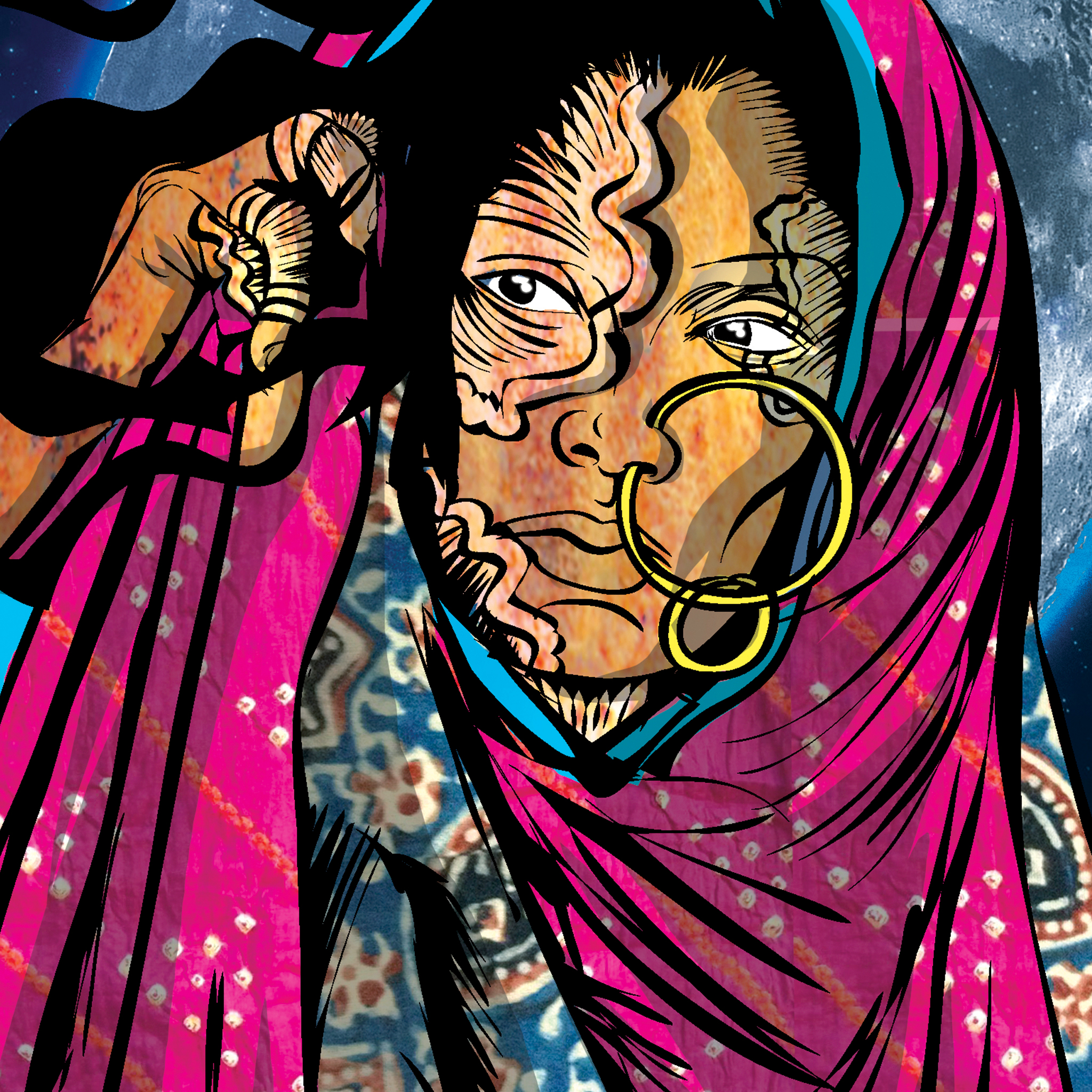
Priya is a modern-day comic book superhero. Yet unlike others, she neither wears a cape nor does she have some mighty superpower to show off. She is a rape survivor. Her power of persuasion is her sole strength and her fight is against the regressive patriarchal society.
Launched in 2014, Priya’s character was first introduced in the comic book ‘Priya’s Shakti’. Created in the wake of the 2012 Nirbhaya gang rape, the book follows the story of Priya, who smashes the prejudice against women that prevails in India.
She is back with the second volume, ‘Priya’s Mirror’, and this time she joins forces with acid attack victims to overcome societal ridicule. Put together with augmented reality, this interactive comic book series is on display at an exhibition in the city for the first time.
“When we launched the first edition, I had the opportunity to meet several acid attack survivors in Delhi, and I immediately realised that they face the same stigma and problems as the rape survivors do. Both rape and acid attack survivors endure emotional and physical traumas, but the scars are more apparent on acid attack survivors,” says Ram Devineni, a documentary filmmaker and one of the creators of the series.
The 40-page comic book sees Priya helping a group of acid attack survivors to take down demon king Ahankar (ego). At the outset, Ahankar comes across as a benevolent man, who has created a palace for acid attack victims. Yet, under the pretext of protecting them, he keeps them trapped.
“Ahankar seems to be a saviour, but he’s not, because he tells the women that nobody wants them, and that they can’t be more than a victim. He wants to keep them paralysed in that way, to keep them thinking of their wounds,” explains filmmaker Paromita Vohra, a co-creator of the series.
The role of Ahankar goes beyond being just an antihero and addresses the deep-rooted notions about masculinity in the society. “Acid is a metaphor for toxic masculinity. Ahankar means ego, which won’t allow you to progress beyond your pain, anger and need for revenge and control. Anyone can be masculine in this sense — you can say you’re a saviour but in order to continue being a saviour, you have to make sure that there are victims,” adds Paromita.
In this fight, what stands out most is the ‘mirror of love’, — Priya’s weapon to help the victims conquer the disabling restrictions imposed by an unempathetic society. Looking into the mirror, they see what they once were – singers, painters, carpenters.
“It was important that the acid attack survivors talk about how they are more than their wounds and scars. That’s what the mirror tells them. You look into the mirror, and you’re not just your scar — there is much more to your life, like there was before the attack, says Paromita, adding, “When Priya shows them the mirror, she’s only saying: ‘Look, remember what you were, and then chart out your own path. She is not a saviour; she just catalyses their transformation.”
And finally, the fact that these characters are all inspired by real life acid attack survivors, makes the story hit that much closer to home. Along with the comic book, the series also features interviews of the victims, which helped formulate the character. One thing that stands out clearly from the interviews is the victim blaming narrative.
“My relatives suggested my parents to inject me with poison after the attack,” recalls Sonia, during her interview. She had to cover her face before leaving home and she always came up with some other story to tell people when questioned, to avoid telling them about the acid attack. “It’s never the attacker, but the victim who is blamed, so I used to keep myself covered.” Agreeing with her, Laxmi, who was attacked in Khan Market in 2005, says, “I was made to feel like a criminal, and the attacker was presumed innocent.”
Another key aspect of the series that turns it into an interactive book is the use of augmented reality, a technology that makes the comic book pages pop up with special animation 3D effects when viewers scan the pages with a free app.
“Augmented reality is another tool to continue the story beyond the comic book. The AR includes video interviews with survivors, stories, and interactive elements that help illuminate and bring another perspective on the story,” adds Devineni. It also features a remix film, Parvati Saves the World, that takes several old Bollywood mythological films from the 1970s and 80s and re-cuts them into a storyline that focuses on gender-based violence.
Next in line is another chapter called ‘Priya and the Lost Girls’, which focuses on sex trafficking and carries forward Priya’s journey.
Priya translates into ‘love’, and it is this power of love that helps her convince people to overcome their fears, just like she overcame hers.
The exhibition is on till February 9 at Kaleidoscope Digital Art Gallery of Triveni Kala Sangam.
During a search of their vehicle, police found 1.068 kg of charas, 98 grams of…
The alleged assault is linked to a dispute over some staff members allegedly cutting the…
This will play a decisive role in providing villagers with legal proof of ownership and…
Hired to take care of his employer's dather, he had only begun working in the…
On Friday, Delhi's AQI stood at 374, with 11 of the 40 monitoring stations in…
Sharma said accident relief trains, along with top officials from the divisional headquarters, have already…